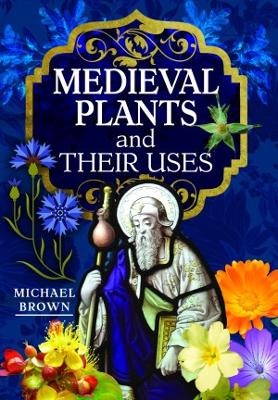Originally posted on my blog Nonstop Reader.
Medieval Plants and their Uses is a concise and well written herbal history of plants by Michael Brown. Released 2nd Dec 2022 by Pen & Sword on their White Owl imprint, it's 184 pages and is available in hardcover and ebook formats.
This is a well presented and layman accessible monograph on the historical importance of plants and agriculture to medieval society. The author is engaged and very knowledgeable, and that enthusiasm (and expertise) comes through clearly in the text.
The book is arranged thematically: medieval vegetables, fruits & nuts, grains, plants & medicine, symbolism & superstition, magical & mysterious, love seduction & beauty, childbirth babies & nursemaids, clothing laundry & household tips, dyes inks & paints, animal health care, harvesting & preserving, fun things to do, and and plant lists with charts in alphabetical order showing botanical & common names for various types of plants including abbreviated uses and historical names in the literature from the medieval period.
The book is enhanced throughout with colour photographs of subject plants as well as diagrams and facsimiles of period illustrations.
Four and a half stars. A valuable and interesting read. It would make a good choice for public or school library acquisition, home use, smallholding, allotment garden library, historical re-enactors, and similar.
Disclosure: I received an ARC at no cost from the author/publisher for review purposes.
Reviewed by annieb123 on
Reading updates
- 11 March, 2023: Started reading
- 11 March, 2023: Finished reading
- 11 March, 2023: Reviewed
